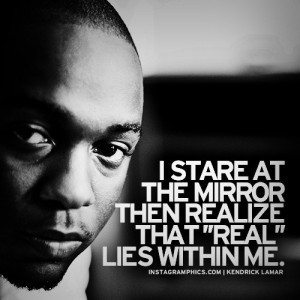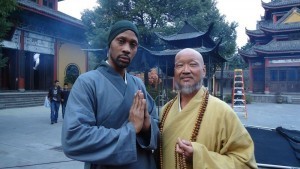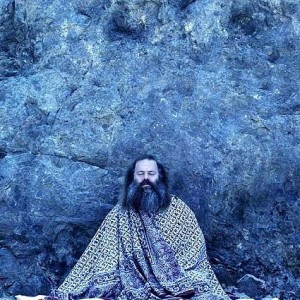Ramses M.'s Blog
January 15, 2015
Meditation and Hip Hop
The mind is a sporadic noisy creature. It’s racing in a million directions like Kanye’s beat ‘On Sight’. Psychologists estimate that the average person can focus intensely on one thing for around 10 minutes, before the mind darts around in a spiral of unorganized thought. Of course the ability to focus is fundamental to success however you define it – whether a student focused on studies, a salesman focused on commission or a spiritualist focused on enlightenment.
So the question is, how can we train the mind to mute the distractive noise and focus stronger for longer?

There are of course a number of ways to develop focus. Some personal development books and websites try to teach ‘quick-fix tips and tricks’ to get you to focus longer like, ‘Open a window by your desk!’ ‘Drink coffee!’ This advice may work for a time, but it doesn’t address the core reasons for a lack of focus, so won’t result in many long term benefits - like taking diet pills to lose weight instead of eating less.
This article looks at one core method, which, if practiced, will result in far greater long term results than any ‘tips and tricks’.
Meditation
‘So I just meditate at the home in Pompeii/
About how I could build a new Rome in one day/’
– Kanye, Clique
Focus is about muting (or at least quieting) the distractions around us so that we can concentrate only on the task at hand. This is how the mind thinks, learns and performs at a higher state. It’s ‘in the zone.’
Meditation is the practice of focusing the mind – the gym where focus muscles strengthen. Meditation is about living in the present and ‘detoxing’ from the constant over-stimulation around us. It helps us stand above the noisy, frantic, chaos of our day-to-day thoughts and experience the world with clarity. Then, from a clear, still, stress-free space, we can direct the mind however we want. As Russell Simmons says, “Meditation is the practice of touching stillness.”
Russell’s book ‘Success through Stillness’ illustrates dozens of scientific studies showing the benefit that continual practice of meditation has on almost all areas of a person’s life. For example physical benefits like decreased blood pressure, and lessened risk of cancer. Mental benefits like increased creativity, and decreased stress. And emotional benefits like increased feelings of compassion, gratitude and happiness.
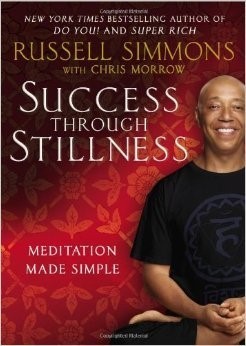
Most Hip Hop Icons use forms of meditation (i.e. quieting and focusing the mind) in their daily lives and will credit it as a major reason for their success. For example Russell says of Jay Z:
“Jay might be the coolest person I’ve ever met. I believe what makes Jay so unflappable is that he’s able to live in the moment. In the recording studio, in the streets, in a boardroom, onstage, wherever he’s at, people might be going crazy around him, snapping pictures, slapping his back, or scramming his name, but you sense Jay never gets caught up in it. He’s always connected to, and content with, what’s happening in his own head.”
The calm, controlled aura people often comment on after meeting Jay comes from living ‘in the zone,’ ‘in the present.’ We admire and want to be around that type of charisma, but it’s not an elusive, godly quality. We can condition that same calm, focused aura in ourselves through meditation.
‘Stepped it up another level, meditated like a Buddhist/’
– Jay Z, Can I Live
Meditation doesn’t have to be about sitting cross-legged under a tree for hours trying to reach nirvana. Anything that involves focusing your attention in the present, on whatever you’re doing, is using your mind-fully – and mindfulness is, in essence, meditation.
There are countless ‘meditation snacks’ that can be just as powerful and easily applied to your everyday life. Then, with practice, just like push-ups condition physical strength, meditation conditions mental strength, and we can take that focus into all areas of our life.
How?
Russell recommends the following technique:
1. Sit somewhere free from distractions. You could sit in your living room, stairwell, toilet or car, but don’t think of noise around you as an obstacle preventing you form meditating. Instead of getting frustrated accept the noise as part of your world. “Let go of the negative emotion toward noise and realize it can’t touch or affect your stillness, and it will fade away,” says Russell.
Whether you sit on a chair, cross legged on the floor, (or in the lotus position if you can: right foot over left thigh, left foot over right thigh. Or half lotus, with only one foot on top of a thigh), keep your back straight (imagine a tight string through your spine towards heaven), shoulders dropped and chest open.
‘Kept his mind focused, meditation position half lotus/
Abbot’s sword novas couldn’t match his magnum opus/’
– RZA, Samurai Showdown
2. Mantra. Russell recommends using the universal mantra ‘rummm’ as a tool to focus the mind. Repeat the word gently over and over to yourself whilst sitting quietly. The mantra is the only thing you will focus on.
(Although note that there is no right or wrong mantra, so do whatever feels right. Some Christians use ‘Jesus,’ some Muslims use ‘Allah.’ 50 Cent says he got his mantra ‘I Am’ from Deepak Chopra, the author of ‘7 laws of spiritual success’:
“I ask myself who I am. It makes me conscious of me in a different way…then I go through my grandparents and say their name out loud so it makes me reflect on how they feel about me.…I ask myself ‘who am I?’ I’m my mother’s child. Grandparents child, and I run through a list of things important to me…then when I run into someone with negative energy I know it’s not mine.”
‘They thought I’m going down, now look I’m levitating/I’m with Deepak, meditating/’
– 50 Cent, United Nations
Or, instead of a mantra many people just focus on breathing. They sit and just think about the sensation of air moving in and out of the lungs.)
3. Maintain: When you get thoughts about anything other than the mantra recognize them, let them go and bring the mantra back to the forefront of your mind. No matter how many thoughts come, don’t engage or try to fight them. Just notice that the mind has wandered and gently bring the mantra back to focus. No matter how loud the distractions are at first, like an unruly child demanding attention, if you don’t engage the thoughts and keep focused on the mantra (or breathing) they will leave you.
4. As you meditate you’ll go through stages:
‘Beginning Phase,’ where the mind settles in and begins to focus. This is the hardest part, when the most distractions will come.
‘Taking Inventory Phase,’ with less distracting noise and where creative ideas may come to you – you can examine the ideas for a moment and then come back to the mantra.
‘Pure Consciousness Phase’: where “thoughts subside and you can access limitless pools of stillness inside you,” says Russell. “This is the phase where the physical healing properties of meditation come from.”
When your mediation is over gently come back to the real world. Sit for a minute and slowly breathe and listen, soaking up the energy around you. Then bring the feeling into your day.
Russell recommends doing this for twenty minutes in the morning and twenty minutes in the evening, every day. (Use a gentle alarm to mark twenty minutes.) Practice every day and eventually the serene ‘in the present’ focus will be a natural part of your life.
This practice turns us from a slave to the noise and distractions around us into the master of our mind – the root definition of success.
Other Ways
Again there is no right or wrong way to do it. Meditation is a form of mindfulness and anything that gets you focused ‘in the moment’ can be called meditation.
For example, Kendrick Lamar doesn’t necessarily use a mantra or focus on breathing, but meditates in his own way by starting each day staring at himself in the mirror for ten minutes:
“It started when I was nine years old. Talking to myself in the mirror I saw something a little different than just what the eye can see in the physical form. I saw my soul in the mirror. It’s scary to realize you can take your mind somewhere totally different…what it does for me is lets me know who I am and who I always will be and where I came from and what I’m trying to do with myself and the people around me as far inspiring others and continuing to be positive…it’s a tricky thing but it works. It lets you know who you are for real.”
RZA also meditates in his own way:
“To me, reading is meditating and playing is meditating. You have meditation and you have meditation in action. When Bodhidharma went to teach Buddhism, to help spread Buddhism in China, the monks were tired. Their bodies weren’t strong. They would meditate good, but they’d fall asleep. So Bodhidharma gave them Kung Fu, a physical way to meditate. Then, with a strong body and a strong mind, they could reach this nirvana or phase of enlightenment that their heart was yearning for.
"In my own personal life, I meditate both ways. At the top of my property there is this little pagoda-type structure. I go up there and sit for hours. Sometimes I sit with my eyes closed in a meditative position. Sometimes I sit with my eyes open. Sometimes – and I don’t suggest this to others – I smoke my little bit of weed and relax. But the main thing I am doing is calming my heart and body and letting myself speak to myself. That’s one of the main goals of meditation, I think. To have yourself speak to yourself.”
Russell Simmons’s partner in founding Def Jam, Rick Rubin, is also a devote mediator, (and cites it as a large reason for his long-lasting success in the music business). He describes some of the meditating exercises he does before getting out of bed in the morning:
“[Firstly,] pull your fingers on your forehead and then pull hard [and slide down your face] until your hands are placed kinda hard on your windpipe… [Another one is called] ‘galloping horses,’ and you start tapping on your head, working all the way back, from top to back.” (Whilst doing these exercises your only focus is on the feeling of your fingers on your skin.)
Here are some more short ‘mindfulness/meditation snacks’ you can take throughout the day:
1. When you wake up take three deep breaths, and then listen to sounds around you. Listen to the traffic, the birds, the neighbors. Just listen.
‘Wake up give thanks for another day/
Take a little time and meditate/’
– Blu, Wake Up
2. Try shorter deep breathing exercises when the mind gets cloudy or anxious: Take a deep breath through your nose for four seconds. Hold for eight seconds. Exhale for four seconds. Hold for eight seconds. Repeat. Your only focus is on your breathing. This clears the mind as the body goes into ‘survival mode’ and blocks out the unimportant. You can then find it easier to refocus on your ‘Higher Purpose’.
‘I felt the panic when they locked me in that cell again/
I had to pray and meditate, control my breath again/’
– T.I., Hallelujah
3. When feeling overwhelmed take a walk at night and look up. Think about space and the infinite universe and remember how small (in comparison) we and our problems are, and how ultimately:
‘The world it seems so very small/
cause nothing even matters, at all/’
– Layrn Hill, Nothing Even Matters
4. Meditation can also be about taking a break from the noise of everyday life. Once a week, or month, it can be useful to go into nature or somewhere peaceful, to clear the mind and assess what is important and where you want to be. Kanye moved to Hawaii for six months after the ‘Taylor Swift incident,’ and the subsequent media and public onslaught. “It was the first time I stopped since I had ‘made it’. It was time to take a break and develop my thoughts as a person and a creative. Time to focus my thoughts on what I want to bring [to the world].”
‘I just need to clear my mind now/
It’s been racing since the summer time/’
– Kanye, Blood on the Leaves
5. Finally an exercise from entrepreneur and Hip Hop fan James Altucher:
“Surrender. Spend sixty seconds completely dedicating this day to whatever higher power you want to believe in (The Force, God, the Tao, The Supreme Alien Intelligence from the Black Hole that’s at the center of the Milky Way Galaxy, etc). They are going to take over your body and mind and do their thing today. Hand over the keys to your body and mind during those sixty seconds and know that today will be dedicated to doing their mission. You are just the vehicle.”
The ‘Surrender’ concept is a similar idea to how Pharrell lives his life:
“You know, we are vessels, we are straws. We are not the juice. And anyone that believes that, those are the people that end up losing their minds later on in life or not happy. I don’t have to be the juice. I don’t have to be the glass. I don’t have to be the coldest part of the whole entire thing, which is the ice. You could be that. I am just happy to be a part of it.”
—
Ramsey Mullaney is author of “The Hip Hop Entrepreneurs Bible” "How It All Got Started: Lessons In Life, Art and Entrepreneurship from Hip Hop Icons" Amazon Website
December 27, 2014
Who Benefits?
Sugar Hill Records was the first Hip Hop record label. In the 1970’s mainstream and major labels either saw Hip Hop as a worthless fad, or didn’t know it existed. It was up to this independent label to introduce the world to The Sugar Hill Gang, Kurtis Blow, Cold Crush Brothers, Furious 4, and other Hip Hop pioneers.
Sugar Hill Records should definitely be credited for playing an important role in the foundation of Hip Hop, but one of the main reasons the label quickly died was the owners violated one very simple universal principles: They didn’t value their people.
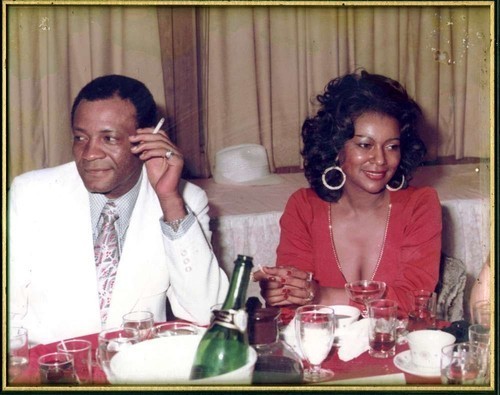
Wonder Mike, from the The Sugar Hill Gang, remembers: “We were waiting for our foreign royalty because we were number one or two in like 16 countries. We were waiting on a fat check, but they told us that we had been paid.”
Another Sugar Hill Gang member, Master Gee, ended up as a door to door sales person a few years after selling millions of the hit single ‘Rappers Delight.’
Afrika Bambatta nicknamed the label co-owner Joe Robinson, ‘Joe Rob-a-Nigger’.
This is just another example that a negative attitude towards others can never bring success. All successful business and individuals know this.
The principle is woven into the fabric of capitalism. Though capitalism is about the pursuit of personal gain, the greatest gainers provided the most value to the greatest number of people.
We cannot win for long if we are exploiting the people around us or the people we do business with (including customers). We cannot win.
Our business will explode either from the inside, like key employees leaving (such as Dr. Dre from Ruthless Records), or from the outside as customers go elsewhere or changes are imposed on the industry.
Napoleon Hill wrote: “Whatever your main goal in life it must benefit all it affects.”
So when making decisions always remember to ask yourself:
“Will this choice that I’m making bring long term happiness to me and those around me?”
If the body sends a message of comfort, the answer is yes, so go ahead with that choice. If the body sends a message of discomfort, and you feel that choice brings pain to you or to those around you, then the answer is no, that’s not the right choice. Simple.
How It All Got Started: Price Reduced
How It All Got Started has been available for a month or so on Amazon. So far those who have read it have only had good things to say, (it’s a shame Amazon insists on deleting EVERY SINGLE positive review! - we’re working with them to get this problem resolved though.)
The news today is the price for both paperback and kindle editions of the book have been reduced. Why?
They reality is, we may never recoup the costs of the book (time and financial), but that’s OK. The positive messages we’ve been receiving are enough compensation. If this book can be part of one persons journey to Greatness then it will have been worthwhile.
So we want to make the book available to as many people as possible, that means reducing the price as low as it can go.
Kindle is now $5.95 (was $9.99) and Paperback is now $15.29 (was $19.95). For a 300+ page book that will hopefully be a part of your journey for years to come we think, and readers have said, this is price is OK.
France: http://amzn.to/1x9HDdn
Germany: http://amzn.to/1EvTYxO
(As always, if you cannot afford to purchase this book, but would like to use it for your journey pls get in touch. There is always a way.)
December 14, 2014
"The Hip Hop Entrepreneurs Bible" is Free Today Only
Today you can get the whole 500+ ‘How It All Got Started’ ebook free (RRP $1995). Here are the links:
US: http://amzn.to/1uB1FYD
UK: http://amzn.to/1GCXYs0
If you (or a contact) are an entrepreneur or artist and influenced by Hip Hop, this is recommended.
Ultimately this book is about helping people live a better life. That comes before the money. So please leave a review after reading - it will help the book reach, and hopefully benefit, more people.
Bless,
Ra
December 10, 2014
"To live only for some future goal is shallow. It’s the sides of the mountain that sustain life, not..."
- Robert M. Pirsig (via purplebuddhaproject)
"Care about people’s approval and you will be their prisoner."
December 7, 2014
The main cover image for How It All Got Started was designed by...
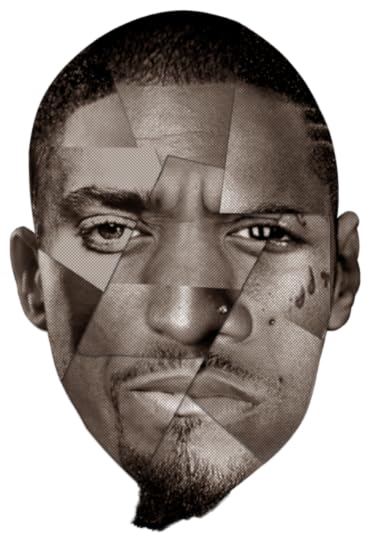
The main cover image for How It All Got Started was designed by the very talented Leslie K (smdesign.webnode.hu)
It features 12 Hip Hop Icons. No one has named all 12 correctly yet.
December 5, 2014
DECEMBER 4 A STAR IS BORN: AN EXTRACT FROM THE JAY Z BIOGRAPHY IN "H.I.A.G.S"

“
GROWING UP IN A WORLD WHERE DEATH AND IMPRISONMENT ARE NORMAL OCCURRENCES WILL MOLD A PERSON IN A UNIQUE WAY.
Sean Carter compared the environment he was raised in to a game of boxing. “In these games where winning is close to impossible and losing is catastrophic, you learn how to compete as if your life depended on it.”
It is those learnings that have enabled him to become the number one entertainment–entrepreneur in the world. This is how he did it.
Sean Carter was born on a somber 4th December, in 1969 New York City. 21 year old Fred Hampton had been the latest black leader to be assassinated by government forces that day, in the effort to prevent a cohesive African–American political movement forming. Since the murders of the great civil rights leaders, Martin and Malcolm, the black community were feeling more disenfranchised, more excluded, more dejected from the land they called home. How could you feel a sense of ‘belonging’ to a country that discriminated against you in work, school, service provision and now was actively trying to divide and segregate your community? Black neighborhoods like Marcy Housing Projects, Brooklyn, New York, were a different country.
Sean Carter was raised in, and by, Marcy. A landscape built to locate the poorest in the city, where bad schools and meager access to public assistance were the norm.
“Our self-esteem is low,” says Sean, “because in these neighborhoods we’re taught we’re less than, we’re not equal to everyone else in the world.”
Though this would also be the perfect breeding ground for Hip Hop.
The neighborhood was calm, where as a child Sean could play with his friends on their bikes or on the abandoned boat that for some reason lay in Marcy playground, as if someone had once dreamed of making it out ‘by any means’ via the Hudson River.
But when the calm was broken, the neighborhood erupted.
From the mid 70’s the area was becoming a hotbed for drugs and gangs, which inevitably brought violence. “There could be people shooting outside at 12 noon on Sundays,” Sean remembers.2 As a nine years old he witnessed his older friend Benny fall to the ground in a pool of blood. Executed in the hallway outside his apartment.

The Carter family (Gloria, Adnis, two daughters and two sons) were six of the 4,300 residents that filled Marcy’s 1,700 apartments. Their government subsidized, 5C, home played a large role in the community. Sean’s parents loved music and their extensive record collection, which included the first ‘rap’ records by King James the Third and Sugar Hill Gang (1979), was continually playing in the apartment, which would host regular neighborhood parties.
“Both my mom and dad had an afro. We lived in a supercool house,” Sean remembers. “They had the biggest record collection in the neighborhood. Everyone in the neighborhood came to party.”
Family, friends and music were the three dominant parts of childhood.
“My early days shaped my musical vocabulary. I remember the music making me feel good, bringing my family together and being a common passion my family shared.”
As a boy Sean would mimic performances seen on late night TV shows with his sisters; singing and dancing in a family living room band.
Apart from the direct musical influence his parents had on him, growing up Sean also learned skills that would be indirectly applied to rap. As a boy his father taught him how to closely observe life as they traveled around New York and when they visited aunts and uncles in other cities. Sean would have to lead the way, so would need to pay close attention to his surroundings.
“[My dad] taught me that life was a giant chessboard where you had to be aware in the moment, but also thinking a few moves ahead.”
Intimate observation is at the heart of any art. The ability to look closely at the world and make connections, then describe and communicate them in creative ways is the spirit of rap, and any serious art form. As poet Wallace Stevens said, “A poet looks at the world, the way a man looks at a woman.”
All these experiences: the unfiltered project environment, his parent’s musical influence, and his fathers teachings, laid the foundation for Sean’s future. But he needed to first find the thing that would enable him to put the pieces together. Luckily it would soon find him. “

